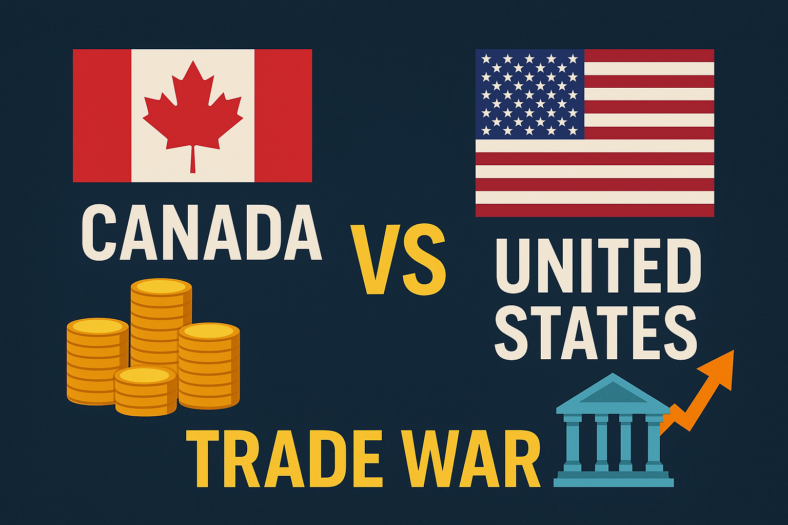In the bustling landscape of Canadian business, securing the right financial support can be the cornerstone of success. Whether you’re a budding entrepreneur launching your first venture or an established company seeking to expand operations, the journey often begins with finding the best business loans available in Canada. Navigating through the myriad of loan options can be daunting, but armed with the right knowledge, entrepreneurs can make informed decisions that propel their businesses forward.
This comprehensive guide aims to demystify the world of business loans in Canada, offering invaluable insights into the types of loans available, the institutions that provide them, and the key factors to consider when choosing the right financing option for your specific needs. From traditional bank loans to alternative financing solutions, we’ll explore the diverse landscape of lending, shedding light on the advantages, drawbacks, and eligibility criteria associated with each option.
Whether you’re in need of capital to launch a startup, fund expansion plans, or manage cash flow fluctuations, understanding the nuances of business loans in Canada is essential. Join us on this journey as we delve into the intricacies of borrowing in the Canadian business landscape, empowering you to make informed financial decisions that pave the way for growth and success.
Best Business Loans in Canada – The Top Picks
What are business loans?
Business loans are financial products designed to provide businesses with access to capital for various purposes, such as starting a new venture, expanding operations, purchasing equipment, managing cash flow, or investing in new projects. These loans are typically offered by financial institutions like banks, credit unions, online lenders, and government agencies.
Business loans come in various forms, each tailored to meet different business needs. Some common types of business loans include:
Term Loans: Term loans are perhaps the most traditional form of business financing. They involve borrowing a lump sum of money from a lender and repaying it over a fixed period, usually with interest. Term loans can be secured (backed by collateral) or unsecured (based solely on the borrower’s creditworthiness).
Lines of Credit: A business line of credit provides flexible access to funds that can be drawn upon as needed, similar to a credit card. Businesses are approved for a certain credit limit, and they can borrow up to that limit as necessary. Interest is typically charged only on the amount borrowed.
Equipment Financing: This type of loan is specifically tailored for purchasing equipment or machinery for business use. The equipment itself often serves as collateral for the loan, making it easier for businesses to secure financing.
Invoice Financing: Also known as accounts receivable financing, this type of loan allows businesses to borrow money against outstanding invoices. Instead of waiting for customers to pay, businesses can access cash quickly by leveraging their accounts receivable.
Small Business Administration (SBA) Loans: In Canada, these are similar to government-backed loans offered by institutions like the Business Development Bank of Canada (BDC). They are designed to support small businesses by providing access to financing with favorable terms and lower interest rates.
Merchant Cash Advances: This alternative financing option provides businesses with a lump sum of cash in exchange for a percentage of future credit card sales. Repayments are made automatically as a percentage of daily credit card transactions.
Each type of business loan has its own terms, interest rates, repayment schedules, and eligibility requirements. It’s essential for business owners to carefully consider their options and choose the loan that best aligns with their financial goals and circumstances.
How do business loans work?
Business loans work by providing companies with access to funds that they can use to finance various aspects of their operations or growth initiatives. Here’s a step-by-step breakdown of how business loans typically work:
Identifying the Need: The first step is for a business to identify its financial needs. This could involve determining the amount of capital required, the purpose of the loan (e.g., purchasing equipment, expanding operations, covering operating expenses), and the timeframe for repayment.
Application Process: Once the need for financing is established, the business applies for a loan with a lender. This involves submitting an application along with relevant financial documents, such as financial statements, tax returns, business plans, and information about collateral (if applicable).
Underwriting and Approval: The lender evaluates the business’s creditworthiness and financial stability during the underwriting process. Factors such as credit history, revenue, profitability, cash flow, and collateral (if applicable) are considered. Based on this assessment, the lender decides whether to approve the loan and, if so, the terms and conditions of the loan, including the interest rate, loan amount, repayment schedule, and any fees.
Loan Disbursement: Upon approval, the lender disburses the loan funds to the business. The funds may be provided as a lump sum or through a line of credit that the business can draw from as needed.
Utilization of Funds: The business uses the loan funds for the intended purpose, whether it’s purchasing equipment, hiring employees, investing in marketing campaigns, or any other business expense approved by the lender.
Repayment: The business is responsible for repaying the loan according to the terms outlined in the loan agreement. This typically involves making regular payments, which may be monthly, quarterly, or according to another schedule agreed upon with the lender. Payments typically include both principal (the amount borrowed) and interest (the cost of borrowing the money).
Completion of Loan Term: Once the business has repaid the loan in full, including any interest and fees, the loan is considered complete, and the business no longer owes any money to the lender.
It’s important for businesses to carefully consider their financial needs, shop around for the best loan options, and thoroughly review the terms and conditions of any loan agreement before proceeding. Additionally, businesses should maintain good communication with their lenders throughout the loan process and stay on top of their repayment obligations to avoid defaulting on the loan.
Pros and cons of business loans
Pros:
Access to Capital: Business loans provide access to funds that can be used to start a new business, expand operations, purchase equipment, hire employees, or invest in growth opportunities. This capital injection can fuel business growth and enable companies to pursue new opportunities.
Flexible Financing Options: There are various types of business loans available, each with its own terms, repayment structures, and interest rates. This flexibility allows businesses to choose a loan that best suits their needs and financial circumstances.
Build Credit History: Successfully repaying a business loan can help establish and improve a company’s credit history. A positive credit history can make it easier for businesses to qualify for future financing at favorable terms.
Maintain Ownership: Unlike equity financing, which involves selling a stake in the business, business loans allow entrepreneurs to retain full ownership and control of their company. Borrowers do not have to share profits or decision-making authority with investors.
Tax Deductions: In many cases, the interest paid on business loans is tax-deductible, reducing the overall cost of borrowing for businesses.
Cons:
Debt Obligation: Business loans come with the obligation to repay the borrowed amount, along with any interest and fees. Failure to make timely payments can result in penalties, damage to credit scores, and even legal action by the lender.
Interest Costs: Borrowing money through a business loan incurs interest costs, which can add up over time, increasing the total amount repaid. High-interest rates can significantly impact the affordability of the loan and the profitability of the business.
Risk of Collateral Requirement: Some business loans, particularly those with lower interest rates or larger loan amounts, may require collateral to secure the loan. Putting up assets as collateral puts them at risk of seizure by the lender in the event of default.
Qualification Criteria: Lenders assess various factors when determining eligibility for a business loan, including credit history, revenue, profitability, and business stability. Businesses with poor credit or limited financial history may struggle to qualify for loans or may face higher interest rates.
Impact on Cash Flow: Loan repayments can place strain on a business’s cash flow, especially if revenues fluctuate or unexpected expenses arise. It’s important for businesses to carefully consider their ability to meet repayment obligations without jeopardizing day-to-day operations.
Ultimately, whether a business loan is beneficial depends on the specific needs and circumstances of the business, as well as its ability to manage debt responsibly. Businesses should weigh the pros and cons carefully and assess their financial situation before deciding to pursue financing.
What types of business loans are available in Canada?
In Canada, businesses have access to a variety of loan options to meet their financing needs. Here are some common types of business loans available:
Traditional Bank Loans: Offered by major banks and financial institutions, traditional bank loans are often sought by established businesses with strong credit histories. These loans typically come with fixed or variable interest rates and may require collateral or personal guarantees.
Small Business Administration (SBA) Loans: In Canada, similar to the U.S. Small Business Administration (SBA) loans, government-backed loans are available through institutions like the Business Development Bank of Canada (BDC). These loans are designed to support small and medium-sized enterprises (SMEs) by providing access to financing with favorable terms and lower interest rates.
Lines of Credit: Business lines of credit provide companies with flexible access to funds that can be drawn upon as needed. Interest is charged only on the amount borrowed, making it a cost-effective solution for managing cash flow fluctuations, covering short-term expenses, or seizing unexpected opportunities.
Equipment Financing: Specifically designed for purchasing equipment or machinery, equipment financing allows businesses to spread the cost of equipment over time while using the equipment itself as collateral. This type of loan is ideal for businesses looking to acquire or upgrade assets without depleting their cash reserves.
Invoice Financing (Accounts Receivable Financing): Invoice financing enables businesses to borrow money against outstanding invoices. Instead of waiting for customers to pay, businesses can access cash quickly by leveraging their accounts receivable. This type of financing can help improve cash flow and address short-term funding needs.
Merchant Cash Advances: Ideal for businesses with consistent credit card sales, merchant cash advances provide a lump sum of cash in exchange for a percentage of future credit card sales. Repayments are made automatically as a percentage of daily credit card transactions, making it a convenient option for retailers and service-based businesses.
Peer-to-Peer (P2P) Loans: In the P2P lending model, individual investors provide funding to businesses through online platforms. These loans often offer competitive interest rates and flexible terms, making them an attractive option for businesses that may not qualify for traditional bank financing.
Alternative Lenders: Beyond traditional banks, there are alternative lenders, including online lenders, fintech companies, and private lenders, that offer a wide range of financing options tailored to the needs of small businesses. These lenders may have less stringent eligibility criteria and faster approval processes than traditional banks.
Each type of business loan has its own advantages, drawbacks, and eligibility criteria. Business owners should carefully evaluate their financing needs and consider factors such as interest rates, repayment terms, collateral requirements, and lender reputation before choosing the right loan option for their business.
Business loans vs personal loans
Business loans and personal loans serve distinct purposes and are tailored to meet different financial needs. Here’s a detailed comparison between the two:
Business Loans:
Purpose: Business loans are specifically designed to finance business-related expenses, such as starting a new venture, expanding operations, purchasing equipment, hiring employees, or managing cash flow.
Borrower: Business loans are obtained by businesses or entrepreneurs for the benefit of their business ventures. The loan is typically tied to the company’s creditworthiness and financial performance rather than the individual borrower’s personal credit history.
Loan Amount: Business loans often offer higher loan amounts than personal loans, making them suitable for funding larger business initiatives or investments.
Interest Rates: Interest rates on business loans can vary depending on factors such as the borrower’s creditworthiness, the loan amount, the term length, and the type of loan. Rates may be higher than personal loan rates due to the higher risk associated with business lending.
Repayment Terms: Business loans typically come with longer repayment terms than personal loans, allowing businesses to spread out repayments over several years. Repayment terms may be structured to align with the business’s cash flow and revenue cycle.
Collateral: Some business loans require collateral to secure the loan, such as business assets, real estate, or personal guarantees from the business owner(s). Collateral helps mitigate the lender’s risk and may result in lower interest rates or higher loan amounts.
Personal Loans:
Purpose: Personal loans are intended for personal use, such as consolidating debt, covering medical expenses, financing home renovations, or funding personal projects and purchases.
Borrower: Personal loans are obtained by individuals for their personal financial needs. The loan is based on the borrower’s personal credit history, income, employment status, and other individual factors.
Loan Amount: Personal loans typically offer smaller loan amounts compared to business loans. While personal loans can still provide substantial funds, they may not be sufficient for large-scale business investments or commercial endeavors.
Interest Rates: Interest rates on personal loans can vary depending on the borrower’s credit score, income, and other factors. Generally, personal loan interest rates may be lower than business loan rates, especially for borrowers with excellent credit.
Repayment Terms: Personal loans often come with shorter repayment terms compared to business loans, typically ranging from one to seven years. Shorter repayment terms may result in higher monthly payments but can also help borrowers pay off the loan faster.
Collateral: Personal loans are typically unsecured, meaning they do not require collateral. However, borrowers with poor credit or limited income may be required to secure the loan with collateral or obtain a co-signer to qualify for the loan.
In summary, the choice between a business loan and a personal loan depends on the purpose of the loan, the borrower’s financial situation, and the amount of funding needed. Businesses seeking to finance business-related expenses should opt for a business loan, while individuals looking to cover personal expenses should consider a personal loan. It’s essential to carefully evaluate the terms, interest rates, and repayment options of each loan type before making a decision.
How to find the best business loans in Canada
Finding the best business loans in Canada requires thorough research and consideration of various factors. Here’s a step-by-step guide to help you identify and secure the most suitable financing option for your business:
Assess Your Needs: Start by clearly defining your financing needs and objectives. Determine the amount of funding required, the purpose of the loan (e.g., expansion, equipment purchase, working capital), and your repayment capacity.
Understand Loan Types: Familiarize yourself with the different types of business loans available in Canada, including traditional bank loans, government-backed loans, lines of credit, equipment financing, invoice financing, and alternative financing options.
Research Lenders: Explore reputable lenders that offer business loans in Canada. This includes major banks, credit unions, online lenders, government agencies (such as the Business Development Bank of Canada), and alternative lending platforms.
Compare Interest Rates and Fees: Compare interest rates, fees, and terms offered by different lenders. Pay attention to factors such as the annual percentage rate (APR), origination fees, application fees, prepayment penalties, and any other associated costs.
Check Eligibility Criteria: Review the eligibility criteria set by each lender to ensure that your business meets the requirements. Criteria may include factors such as credit score, annual revenue, business age, industry type, and collateral availability.
Evaluate Repayment Terms: Consider the repayment terms offered by each lender, including loan duration, repayment frequency (e.g., monthly, quarterly), and flexibility in making additional payments or early repayment without penalties.
Read Reviews and Testimonials: Look for reviews and testimonials from other businesses that have worked with the lenders you’re considering. Feedback from past clients can provide valuable insights into the lender’s reliability, customer service, and overall experience.
Consider Customer Service: Assess the level of customer service provided by each lender. Look for lenders that are responsive, transparent, and willing to answer your questions and address your concerns promptly.
Seek Professional Advice: Consider seeking advice from financial advisors, accountants, or business consultants who can provide guidance on selecting the best financing option for your specific needs and circumstances.
Apply for Pre-Approval: Once you’ve identified potential lenders, consider applying for pre-approval to get a better understanding of the loan terms you qualify for. Pre-approval can also help streamline the loan application process when you’re ready to proceed.
Review and Negotiate Terms: Review the loan offers you receive carefully and negotiate terms if necessary. Don’t hesitate to ask questions or request modifications to the terms to ensure they align with your business’s needs and financial goals.
Submit Application: Once you’ve selected a lender and finalized the terms, submit your loan application along with any required documentation. Be prepared to provide financial statements, tax returns, business plans, and other relevant information to support your application.
By following these steps and conducting thorough due diligence, you can find the best business loan in Canada that meets your financing needs and helps fuel the growth and success of your business.
What are common fees and interest rates for business loans
Fees and interest rates for business loans can vary depending on the lender, the type of loan, the borrower’s creditworthiness, and other factors. Here are some common fees and interest rates you may encounter when applying for business loans in Canada:
Interest Rates:
Fixed Interest Rates: Fixed interest rates remain constant throughout the term of the loan, providing predictability in monthly payments. These rates are determined based on factors such as the lender’s cost of funds, prevailing market rates, and the borrower’s creditworthiness.
Variable Interest Rates: Variable interest rates fluctuate based on changes in the market interest rates, such as the prime rate or the Bank of Canada’s benchmark rate. While variable rates may start lower than fixed rates, they can increase or decrease over time, leading to uncertainty in monthly payments.
Prime Rate-based Loans: Some business loans are tied to the prime rate, which is the interest rate that banks charge their most creditworthy customers. The interest rate on these loans may be expressed as “prime plus” a certain percentage, such as prime plus 2%.
Risk-based Pricing: Lenders may adjust interest rates based on the perceived risk associated with the borrower’s credit profile, financial stability, and the purpose of the loan. Borrowers with strong credit may qualify for lower interest rates, while those with higher risk profiles may face higher rates.
Fees:
Origination Fees: Origination fees, also known as application fees or processing fees, are charged by lenders to cover the cost of processing the loan application. These fees are typically calculated as a percentage of the loan amount and may be non-refundable.
Administration Fees: Administration fees are charged by lenders to cover administrative costs associated with servicing the loan, such as account maintenance, document processing, and customer support. These fees may be charged upfront or included in the loan’s ongoing costs.
Late Payment Fees: Late payment fees are imposed when borrowers fail to make timely loan payments. These fees are intended to incentivize timely repayment and may be charged as a flat fee or a percentage of the overdue amount.
Prepayment Penalties: Prepayment penalties are fees charged to borrowers who repay their loans before the scheduled maturity date. These penalties compensate lenders for the interest income they would have earned if the loan had been repaid according to the original terms.
Annual Fees: Some lenders may charge annual fees for maintaining the business loan account. These fees are typically assessed on an annual basis and may be charged regardless of whether the borrower utilizes the full credit line.
Closing Costs: Closing costs are fees associated with finalizing the loan agreement, such as legal fees, appraisal fees, and title search fees. These costs may vary depending on the complexity of the transaction and are typically paid by the borrower at the loan closing.
It’s important for borrowers to carefully review the terms and conditions of any business loan offer, including the interest rates and fees, to understand the total cost of borrowing and ensure it aligns with their financial goals and repayment capacity. Additionally, borrowers should compare offers from multiple lenders to find the most competitive rates and fees for their specific financing needs.
What are the requirements to apply for a business loan
The requirements to apply for a business loan can vary depending on the lender, the type of loan, and the borrower’s specific circumstances. However, there are several common requirements that most lenders typically consider when evaluating loan applications. Here are some key requirements to keep in mind when applying for a business loan:
Business Information:
- Legal Business Name: Provide the legal name under which the business is registered.
- Business Structure: Specify the legal structure of the business (e.g., sole proprietorship, partnership, corporation).
- Business Address: Provide the physical address of the business, including any additional locations if applicable.
- Industry Type: Describe the industry or sector in which the business operates.
- Business Plan: Some lenders may require a business plan outlining the company’s goals, operations, target market, competitive analysis, and financial projections.
Financial Information:
- Revenue: Provide details of the business’s annual revenue or sales volume.
- Profitability: Demonstrate the business’s profitability through financial statements, such as income statements, balance sheets, and cash flow statements.
- Credit History: Provide information about the business’s credit history, including any existing loans or lines of credit, payment history, and credit utilization.
- Tax Returns: Submit copies of the business’s tax returns for the past two to three years to verify income and financial stability.
- Bank Statements: Provide recent bank statements to demonstrate cash flow and financial health.
Personal Information:
- Personal Credit Score: Lenders often consider the personal credit scores of business owners, particularly for small businesses or startups with limited credit history.
- Personal Financial Statements: Business owners may be required to submit personal financial statements detailing their assets, liabilities, income, and expenses.
- Identification: Provide government-issued identification, such as a driver’s license or passport, to verify the identity of the business owner(s).
Collateral:
- Collateral: Some lenders may require collateral to secure the loan, such as business assets, real estate, equipment, or personal guarantees from the business owner(s).
- Valuation: If collateral is required, lenders may conduct valuations to assess the value of the assets being offered as security for the loan.
Additional Documentation:
- Legal Documents: Provide any relevant legal documents, such as business licenses, permits, articles of incorporation, partnership agreements, or operating agreements.
- Business Certifications: If applicable, provide certifications or accreditations relevant to the industry or business operations.
- Other Supporting Documents: Depending on the lender and the specific loan requirements, additional documentation may be requested to support the loan application.
It’s important for borrowers to carefully review the specific requirements of each lender and ensure that all necessary documentation is provided accurately and promptly. Meeting the lender’s requirements and providing comprehensive information can increase the likelihood of loan approval and expedite the application process. Additionally, borrowers should be prepared to discuss their business plans, financial goals, and repayment strategy with the lender to demonstrate their readiness and commitment to responsibly managing the loan.
Business loans vs personal loans
Business loans and personal loans are two distinct types of financing designed to meet different financial needs. Here’s a detailed comparison between the two:
Purpose:
Business Loans: Business loans are specifically intended to finance business-related expenses, such as starting a new venture, expanding operations, purchasing equipment, or managing cash flow. These loans are used to support business growth and investment.
Personal Loans: Personal loans are intended for individual use and can be used for a variety of personal expenses, such as consolidating debt, covering medical bills, financing home renovations, or funding vacations. Personal loans cater to personal financial needs and are not tied to business activities.
Borrower:
Business Loans: Business loans are obtained by businesses or entrepreneurs on behalf of their business ventures. The loan is typically tied to the business’s creditworthiness, financial performance, and potential for repayment rather than the individual borrower’s personal credit history.
Personal Loans: Personal loans are obtained by individuals for their personal financial needs. The loan is based on the borrower’s personal credit history, income, employment status, and other individual factors. Personal loans are not tied to a specific business or business activity.
Loan Amount:
Business Loans: Business loans typically offer higher loan amounts compared to personal loans. These loans can provide substantial funds to support business growth, expansion, or investment in assets and infrastructure.
Personal Loans: Personal loans usually offer smaller loan amounts compared to business loans. While personal loans can still provide significant funds, they may not be sufficient for large-scale business investments or commercial endeavors.
Interest Rates:
Business Loans: Interest rates on business loans can vary depending on factors such as the lender, the borrower’s creditworthiness, the loan amount, and the term length. Business loan interest rates may be higher than personal loan rates due to the higher risk associated with business lending.
Personal Loans: Interest rates on personal loans can also vary depending on factors such as the borrower’s credit score, income, and loan amount. Generally, personal loan interest rates may be lower than business loan rates, especially for borrowers with excellent credit.
Repayment Terms:
Business Loans: Business loans typically come with longer repayment terms compared to personal loans. These terms allow businesses to spread out repayments over several years, aligning with the business’s cash flow and revenue cycle.
Personal Loans: Personal loans often come with shorter repayment terms compared to business loans. While shorter terms may result in higher monthly payments, they can help borrowers pay off the loan faster and reduce overall interest costs.
Collateral:
Business Loans: Some business loans may require collateral to secure the loan, such as business assets, real estate, equipment, or personal guarantees from the business owner(s). Collateral helps mitigate the lender’s risk and may result in lower interest rates or higher loan amounts.
Personal Loans: Personal loans are typically unsecured, meaning they do not require collateral. However, borrowers with poor credit or limited income may be required to secure the loan with collateral or obtain a co-signer to qualify for the loan.
In summary, the choice between a business loan and a personal loan depends on the purpose of the loan, the borrower’s financial situation, and the amount of funding needed. Businesses seeking to finance business-related expenses should opt for a business loan, while individuals looking to cover personal expenses should consider a personal loan. It’s essential for borrowers to carefully evaluate their options, compare interest rates and terms, and choose the financing option that best aligns with their needs and financial goals.
Alternatives to business loans
There are several alternatives to traditional business loans that entrepreneurs and businesses can explore to secure financing. These alternatives offer flexibility, convenience, and sometimes quicker access to funds. Here are some options:
Business Lines of Credit: Similar to a credit card, a business line of credit provides access to a revolving credit limit that can be drawn upon as needed. Interest is only charged on the amount borrowed, making it a flexible financing option for managing cash flow fluctuations, covering short-term expenses, or seizing opportunities as they arise.
Small Business Grants: Governments, non-profit organizations, and private foundations offer grants to support small businesses, startups, and specific industries. Unlike loans, grants do not need to be repaid, making them an attractive source of free capital. However, competition for grants can be fierce, and eligibility criteria may vary.
Crowdfunding: Crowdfunding platforms allow businesses to raise funds from a large number of individuals or investors online. Through rewards-based crowdfunding, businesses offer products, services, or rewards in exchange for financial contributions. Equity crowdfunding allows businesses to sell shares or ownership stakes to investors in exchange for funding.
Angel Investors: Angel investors are affluent individuals who provide capital to startups and early-stage businesses in exchange for equity ownership or convertible debt. In addition to funding, angel investors often provide valuable expertise, mentorship, and industry connections to help businesses succeed.
Venture Capital: Venture capital firms invest in high-growth startups and emerging companies with the potential for significant returns. Venture capital funding typically involves selling equity stakes in the business to investors in exchange for financing. Venture capitalists often take an active role in guiding the strategic direction and growth of the businesses they invest in.
Peer-to-Peer (P2P) Lending: P2P lending platforms connect borrowers directly with individual investors willing to lend money. Borrowers can access financing quickly and with less stringent eligibility criteria compared to traditional banks. P2P lending offers competitive interest rates and flexible repayment terms, making it an attractive alternative to traditional loans.
Invoice Financing (Factoring): Invoice financing allows businesses to borrow money against outstanding invoices. Instead of waiting for customers to pay, businesses can access cash quickly by selling their unpaid invoices to a third-party financing company at a discount. Invoice financing can help improve cash flow and address short-term funding needs.
Revenue-Based Financing: Revenue-based financing (RBF) provides capital to businesses in exchange for a percentage of future revenues. Unlike traditional loans, RBF does not require fixed monthly payments but instead involves sharing a portion of the business’s future income until the investor’s initial investment and return are repaid.
Bootstrapping: Bootstrapping involves funding a business using personal savings, revenue generated from operations, or resources available without external financing. While bootstrapping may require sacrifices and slower growth initially, it allows entrepreneurs to maintain full ownership and control of their businesses without taking on debt or diluting equity.
Supplier Credit: Negotiating extended payment terms with suppliers or vendors can provide businesses with additional time to pay for goods and services, effectively acting as a form of short-term financing. Supplier credit can help improve cash flow and working capital management without the need for external financing.
Each of these alternatives to traditional business loans has its own advantages, drawbacks, and considerations. Businesses should carefully evaluate their financing needs, risk tolerance, and long-term goals to determine the most suitable option for their specific circumstances. Additionally, consulting with financial advisors or experts in business financing can provide valuable insights and guidance in exploring alternative funding sources.
FAQs about the best business loans in Canada
Canada offers various types of business loans, including traditional bank loans, government-backed loans, lines of credit, equipment financing, invoice financing, and alternative lending options.
Qualification criteria vary depending on the lender and the type of loan. Generally, lenders consider factors such as credit history, annual revenue, profitability, business age, industry type, collateral availability, and repayment capacity.
Interest rates on business loans in Canada can vary depending on factors such as the lender, the borrower’s creditworthiness, the loan amount, and the term length. Rates may be fixed or variable and can range from competitive to higher rates, depending on the risk associated with the loan.
Loan amounts vary depending on the lender, the type of loan, and the borrower’s financial situation. Generally, businesses can borrow anywhere from a few thousand dollars to several million dollars, depending on their needs and eligibility.
Repayment terms vary depending on the lender and the type of loan. Business loans in Canada may have repayment terms ranging from several months to several years, with options for fixed or flexible repayment schedules.
Some business loans in Canada may require collateral to secure the loan, such as business assets, real estate, equipment, or personal guarantees from the business owner(s). Collateral helps mitigate the lender’s risk and may result in lower interest rates or higher loan amounts.
The approval process for a business loan in Canada can vary depending on factors such as the lender, the type of loan, and the complexity of the application. While some lenders offer quick approval and funding, others may have a more thorough review process that takes longer.
Required documentation may include business information (such as legal name, structure, address, and industry type), financial information (such as revenue, profitability, credit history, tax returns, and bank statements), personal information (such as credit score, personal financial statements, and identification), and any additional documentation requested by the lender.
Yes, there may be fees associated with business loans in Canada, such as origination fees, administration fees, late payment fees, prepayment penalties, annual fees, and closing costs. It’s important for borrowers to review the terms and conditions of the loan agreement to understand the total cost of borrowing.
Business owners can explore various options for business loans in Canada, including major banks, credit unions, online lenders, government agencies (such as the Business Development Bank of Canada), and alternative lending platforms. It’s recommended to compare interest rates, fees, terms, and eligibility criteria from multiple lenders to find the best financing option for your business needs.
In conclusion, business loans play a vital role in the growth and success of businesses across Canada. Whether you’re a startup looking to get off the ground or an established company seeking to expand operations, securing the right financing can be essential for achieving your goals. With a wide range of loan options available, including traditional bank loans, government-backed loans, lines of credit, and alternative financing solutions, businesses have access to diverse sources of capital to meet their specific needs.
While business loans offer opportunities for growth and investment, it’s important for borrowers to carefully consider their options, review the terms and conditions of loan agreements, and assess their ability to repay the borrowed funds responsibly. By understanding the requirements, interest rates, fees, and repayment terms associated with business loans in Canada, business owners can make informed decisions that support their financial objectives and contribute to long-term success.
Furthermore, businesses should explore alternative financing options, such as grants, crowdfunding, angel investors, and venture capital, to supplement traditional loan financing and diversify their funding sources. By leveraging a combination of financing options and strategic financial planning, businesses can optimize their capital structure, mitigate risks, and position themselves for growth in the dynamic Canadian business landscape.
Ultimately, business loans in Canada serve as valuable tools for entrepreneurs and businesses to innovate, expand, and thrive in an increasingly competitive market environment. By leveraging the right financing solutions and managing financial resources effectively, businesses can unlock new opportunities, drive economic growth, and achieve their full potential in the Canadian business landscape.




















